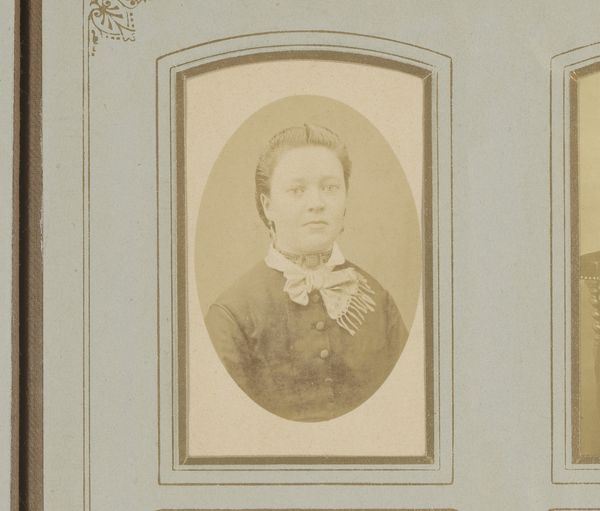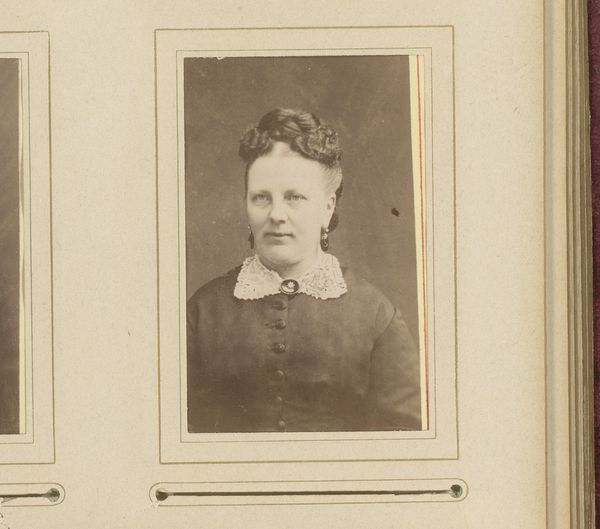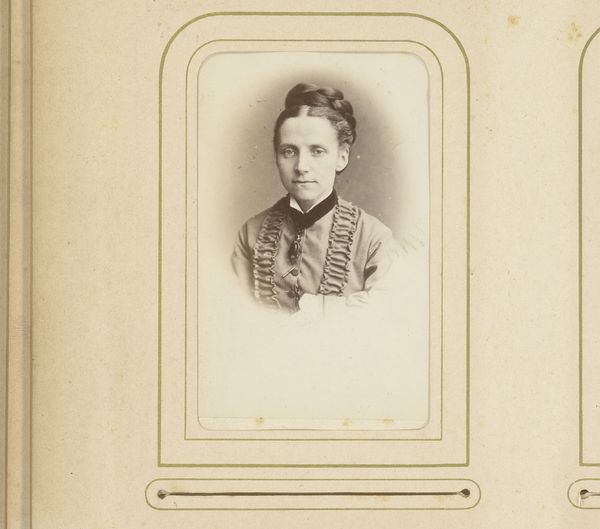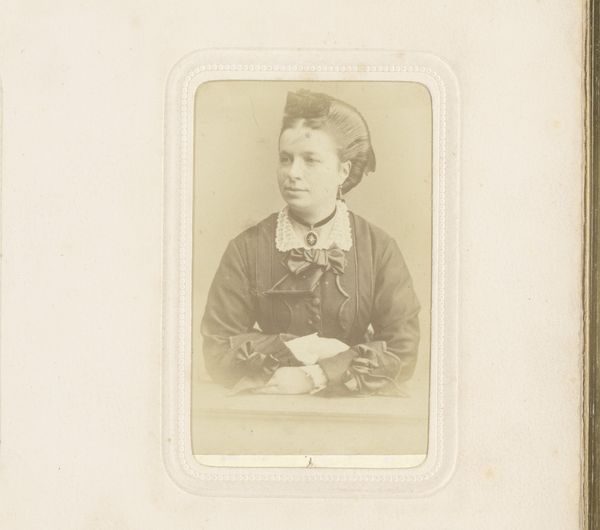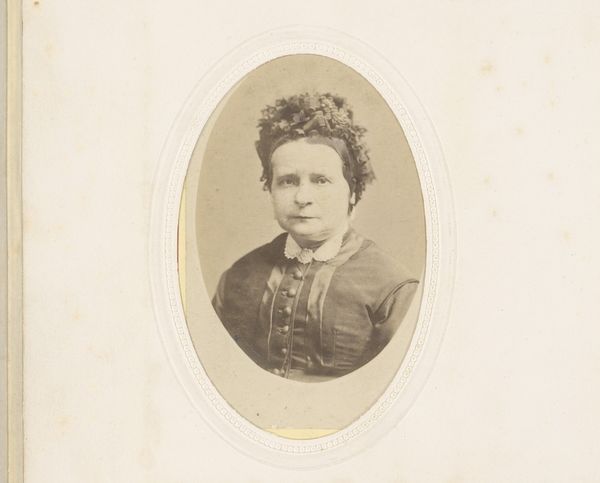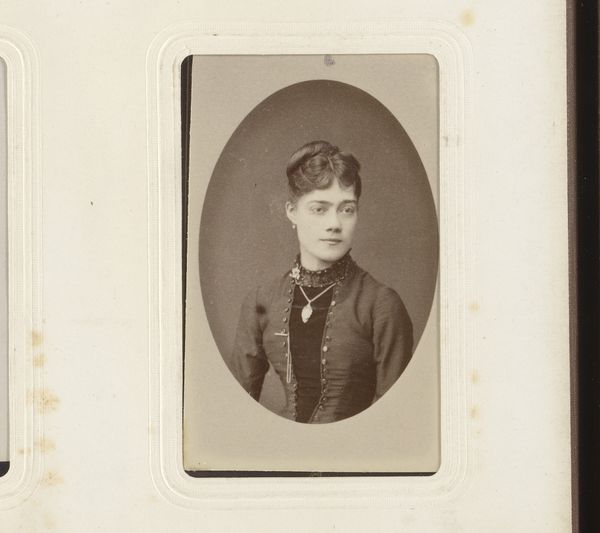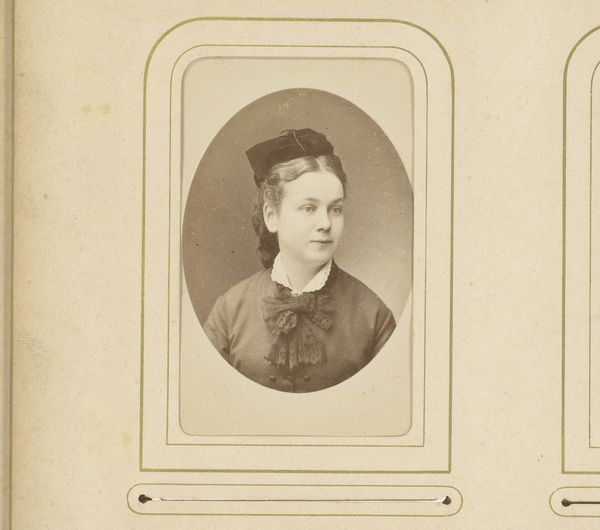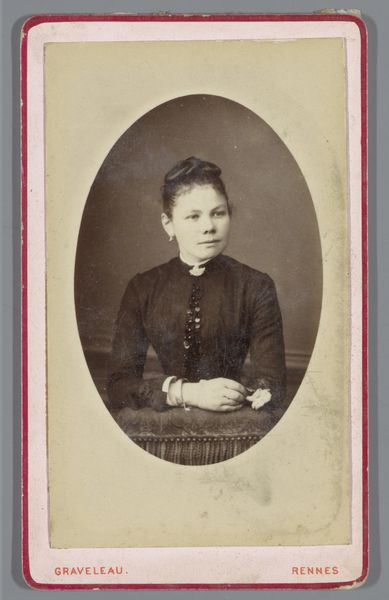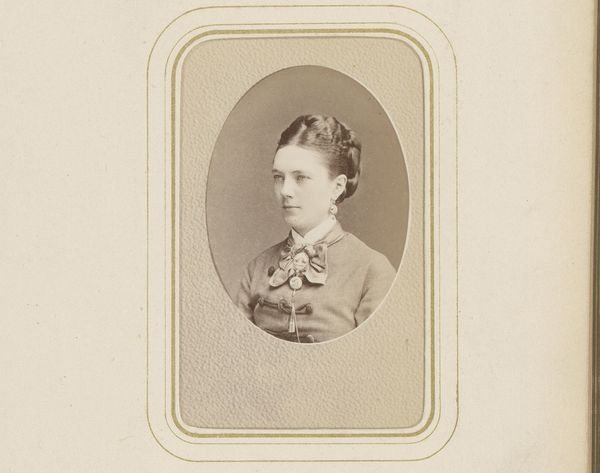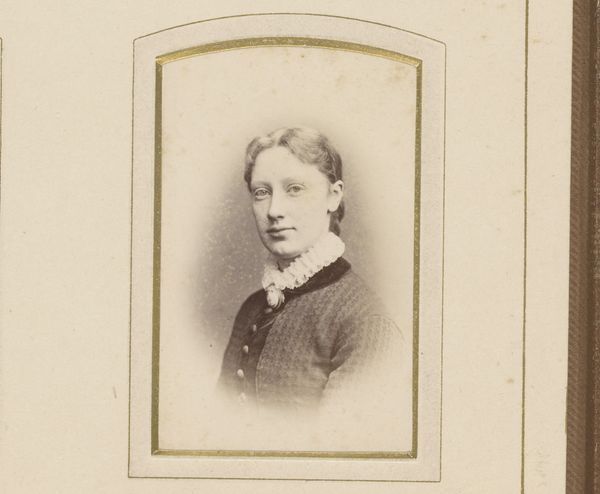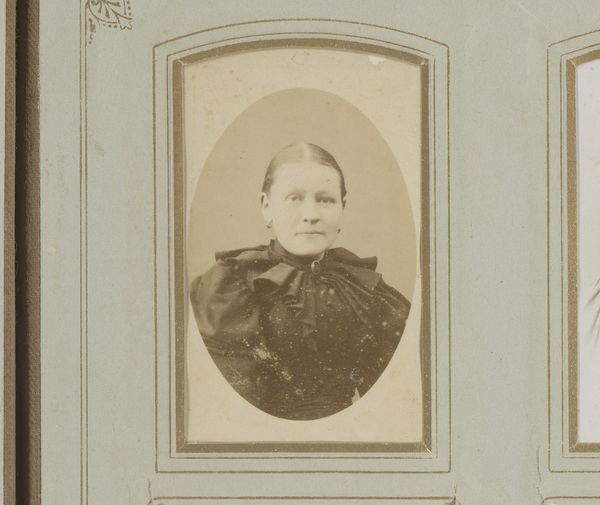
photography
#
portrait
#
16_19th-century
#
photography
#
historical photography
#
19th century
#
realism
Dimensions: height 84 mm, width 52 mm
Copyright: Rijks Museum: Open Domain
Godfried de Jong created this portrait of a woman using the 19th-century photographic technique known as the albumen print. This process involved coating paper with egg white and then silver nitrate, making it sensitive to light. A glass negative was placed on the prepared paper and exposed to sunlight, creating a detailed positive image. The albumen print was prized for its fine detail and warm sepia tone, visible here. This photographic technique became a key part of commercial photography, allowing for the mass production of portraits and other images. Consider the labor involved: preparing the chemicals, coating the paper, precisely exposing the print, and carefully mounting the final product. The rise of photography democratized portraiture, making it accessible to a wider range of people beyond the elite who could afford painted portraits. By understanding the materials and processes behind this seemingly simple image, we gain insight into the social and technological shifts of the 19th century.
Comments
No comments
Be the first to comment and join the conversation on the ultimate creative platform.
